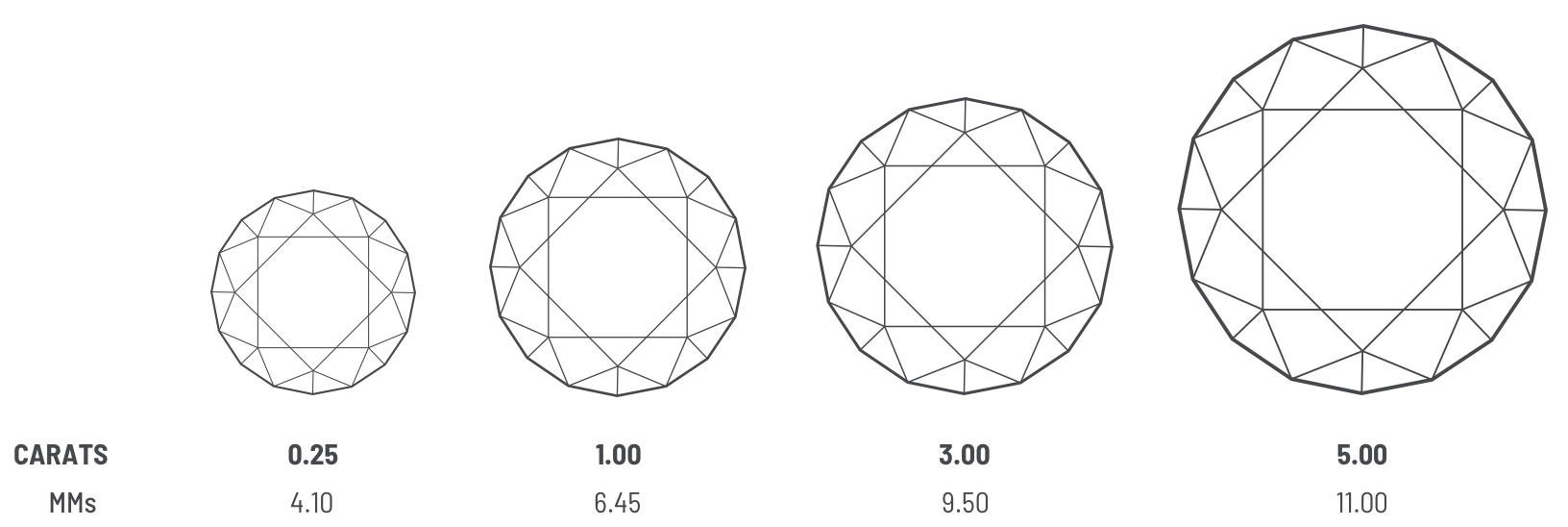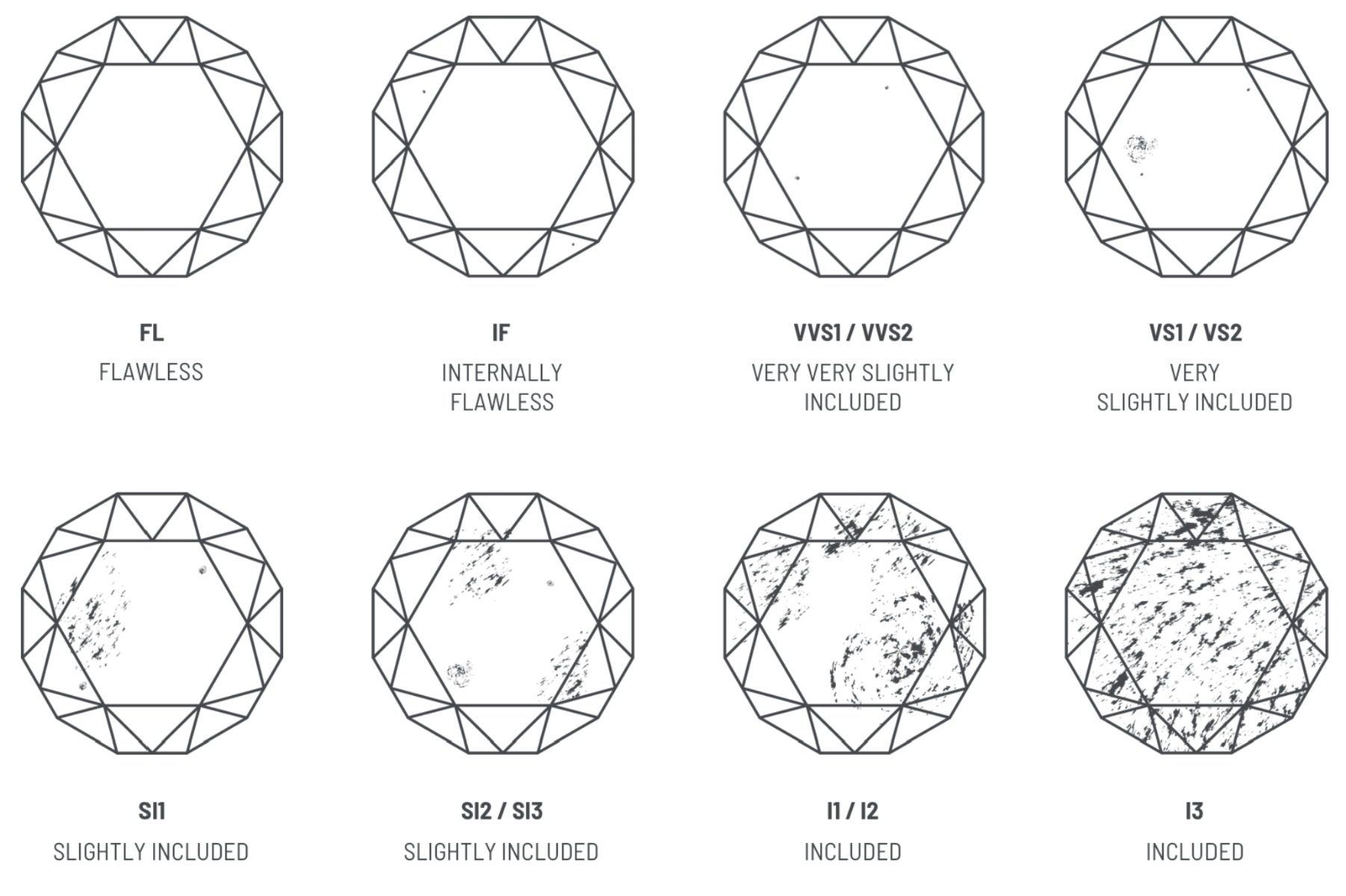Carat Weight
The most obvious factor of a diamond's value is its size. However, two diamonds of equal size can have completely different values because of the other C's. As with all precious gems, the weight or size of a diamond in measured in carats. One carat is equal to 200 milligrams. For example when weighing diamonds, a 1.00 carat is divided into 100 points; therefore, a diamond of 25 points is also described as 0.25 carats or a quarter of a carat. As a diamond increases in size, its rarity increases, which also increases the price-per-carat exponentially. Therefore, a two-carat diamond is more than twice as valuable than a one-carat diamond of the same quality and characteristics.

Cut
Cut refers to the proportions and finish created when transforming a rough diamond into a polished diamond. Of the four C's, cut has the most influence on a diamond's brilliance, radiance and beauty. Round is the most brilliant shape, and also has the most demanding cutting standards. When a diamond has been cut to ideal proportions by a master cutter, it will refract light internally from one facet to another and release light. The better the cut, the more light is released through the top of the diamond rather than the bottom.

Color
To the untrained eye, most gem-quality diamonds appear colorless. But actually, there are miniscule differences in shade - the result of trace elements combining with carbon over the diamond's million-year formation. Truly colorless diamonds are the most rare and exquisite of them all.

Clarity
While many diamonds are incredibly beautiful, no two are alike. Most diamonds have flaws, called inclusions, which are unique to each diamond. Inclusions can be crystals, feathers and lines generally not seen unless magnified. Clarity is determined by the absence of inclusions. The fewer the inclusions, the more rare and more valuable the diamond. Clarity grades are determined by the number, size, color and location of inclusions. The smaller and less visible the inclusions, the higher the diamond's grade.


